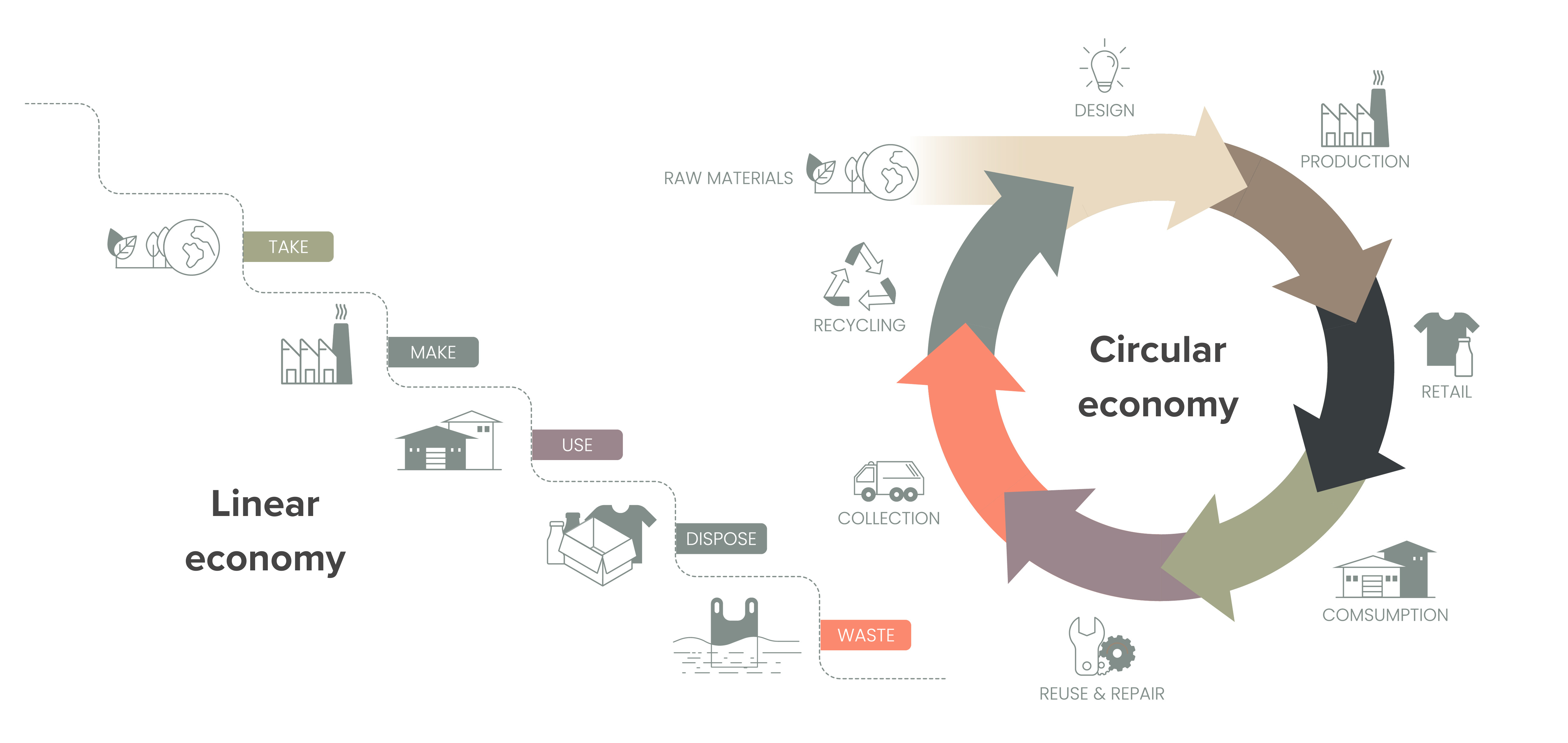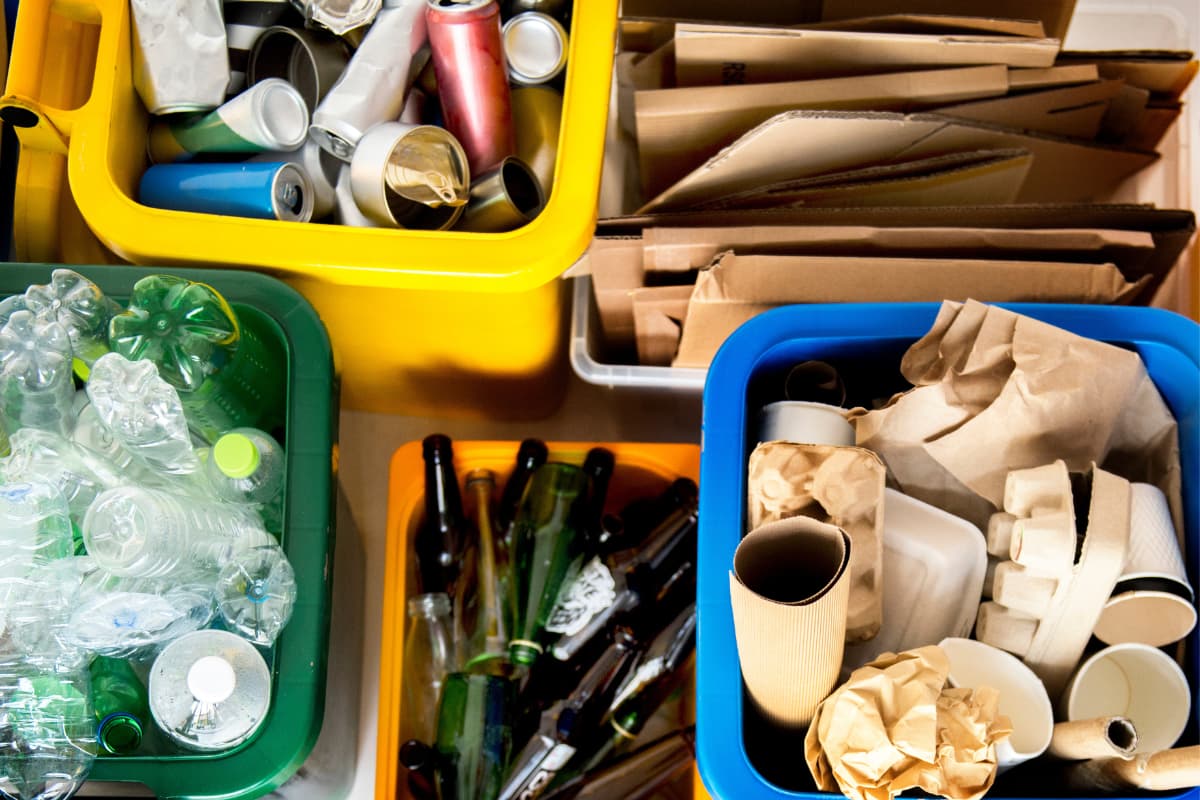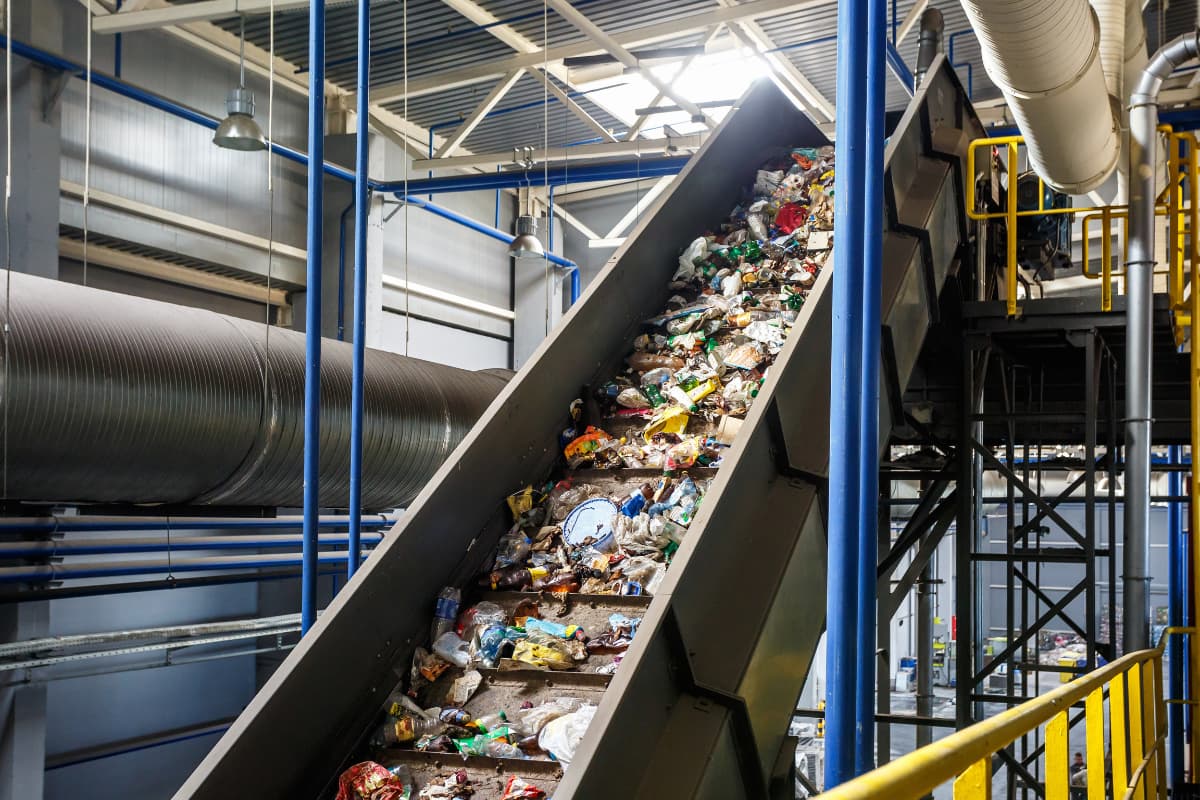The circular economy
For centuries, the economy has revolved around a “take-make-dispose” approach in which raw materials are extracted from the earth, turned into products and then thrown away at the end of their lifecycle.
Only in recent decades, arising out of a new awareness of climate issues, have people stopped to question the impact of modern consumer culture on the environment.
Globally, more than 2 billion tonnes of municipal waste are generated every year, with this figure set to rise to 3.4 billion tonnes by 2050. Industrial activity from the manufacturing and production sector also accounts for roughly one-fifth of the world’s carbon emissions.
The time has come to embrace a circular and more sustainable economic model that meets our present needs without compromising those of the future.
What is the circular economy?
The circular economy is an economic system that aims to minimise waste by keeping products and raw materials in circulation for as long as possible. In doing so, it offers a solution to several environmental challenges such as habitat destruction and global warming.
Not only that, but economists argue that the circular economy offers benefits for businesses, providing a platform for sustainable growth in which resources are managed more efficiently and costs are kept to a minimum.

How does the circular economy work?
Two closely intertwined principles underpin the circular economy: cutting down on waste and recapturing what remains to manufacture new products.
Eliminating waste
The ultimate aim of the circular economy is to develop a system in which nothing is wasted. To get there, major changes must be made to way we design products as well as what we do with them once they reach the end of their lifespan.
An important part of this process will be to reduce and eventually eliminate single-use plastics, which are used just once before being incinerated or sent to landfill. In a truly circular economy, these harmful methods of dealing with waste will become a thing of the past.
Circulating materials
Once waste materials have been recovered, they should be reused, repaired or recycled in their entirety to form new products, ready to start the cycle again. From clothing and furniture to food waste and electrical equipment, there’s almost no limit to what materials can be kept in circulation.
In reality, though, a huge amount of recyclable waste ends up in landfill. Improvements in recycling infrastructure along with a better public understanding of what materials can actually be recycled are needed to realise the full potential of the circular economy.


The role of copper in the circular economy
As an infinitely recyclable material that maintains its properties through different lifecycles, copper is perfectly placed to play a starring role in the circular economy. Copper is also an incredibly durable material, which means it can be used for decades before needing to be recycled.
Used widely in plumbing, construction, transportation, power generation and transmission, copper is a sustainable material that can be used a direct replacement for single-use materials across a range of industries.
Once they reach the end of their lifecycle, copper products – such as copper pipes and electrical copper wire – can be recovered, melted down and cast into new materials, ready for re-entry into the circular economy.
Frequently asked questions
Why is the circular economy important?
As the climate crisis worsens, the need to get more from fewer resources becomes more urgent. Establishing a circular economy will go a long way to tackling climate change by reducing emissions from manufacturing while also protecting biodiversity threatened by waste and pollution.
How does the circular economy contribute to sustainability?
The circular economy supports more sustainable modes of production and consumption by reducing waste and keeping materials in circulation for as long as possible. In practice, this means reusing and recycling products rather than sending them to landfill.
Is the circular economy realistic?
At a global or even national level, we are some way off from establishing a circular economy. However, many major companies like IKEA are now taking steps to implement a circular business model, driven by a desire to cut costs and improve sustainability credentials.